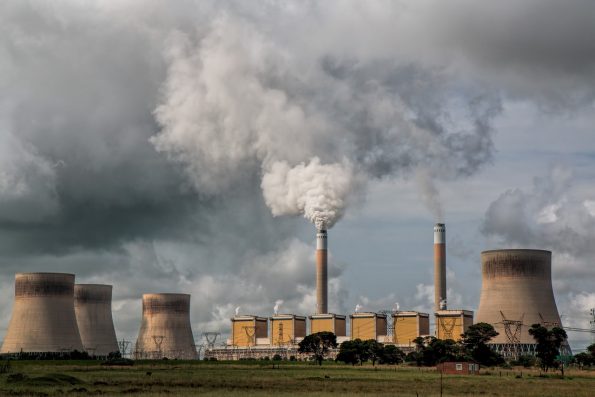How Carbon Capture Technology Can Help High-Emission Businesses Become Sustainable
Greenhouse gas emissions have posed a severe environmental challenge to humankind for several years. The heat trapped in these gases is warming our planet and affecting the environment. However, despite the challenges, these emissions are increasing every year. According to Our World in Data, 53.85 billion tonnes of greenhouse gases were emitted worldwide in 2022.

https://cdn.pixabay.com/photo/2014/06/21/20/11/power-station-374097_1280.jpg
Carbon capture technology has emerged as an important invention for combating climate change and lowering greenhouse gas emissions. High-emission businesses, often at the forefront of environmental scrutiny, face immense pressure to adopt sustainable practices.
Carbon capture and storage (CCS) technology provides a potential solution for these businesses to reduce their carbon footprint. Here’s how CSS can help these industries become sustainable.
An Overview of Carbon Capture Technology
Carbon capture is considered sustainable since it tackles the underlying cause of climate change by lowering CO2 emissions into the atmosphere. It supplements renewable energy sources with energy efficiency initiatives to create a holistic plan for reducing greenhouse gas emissions.
The first phase involves separating CO₂ from other gases generated during industrial activities. This can be accomplished in many ways, including pre-combustion capture, post-combustion capture, and oxy-fuel combustion.
Pre-combustion capture involves gasifying fossil fuels to produce a mixture of hydrogen and CO₂, then separating the CO₂. Post-combustion capture removes CO₂ from flue gases, whereas oxy-fuel combustion burns fossil fuels in pure oxygen. This produces a flue gas mostly consisting of CO₂ and water vapor.
Once captured, CO₂ is transferred to storage facilities by pipelines, ships, or vehicles. Pipelines are the most popular and cost-effective way to transfer huge amounts of CO₂ across vast distances.
CO₂ may be stored underground, including exhausted oil and gas reserves and unmineable coal seams. CO₂ may be used in industrial applications, including enhanced oil recovery (EOR) and chemical and fuel production.
As stated by Atoco, advanced carbon capture modules based on novel molecularly engineered materials can further improve their performance. These modules can enable CCS solutions to achieve solid-state carbon capture and store it efficiently. Moreover, they can be tailored based on business operations to capture carbon from different sources.
Benefits for High-Emission Businesses
CCS technology offers a means to significantly reduce carbon emissions for high-emitting industries, particularly those reliant on fossil fuels. This is crucial for cement, steel, and chemical manufacturing industries, which are inherently carbon-intensive and difficult to decarbonize through renewable energy alone.
By integrating CCS technology, these businesses can continue their operations while adhering to stringent environmental regulations and reducing their overall carbon footprint.
Economic Incentives
Many countries provide financial incentives, tax credits, and subsidies to promote the use of CCS technology. The 45Q tax credit in the US offers financial incentives to enterprises that collect and store CO₂. Incentives can help high-emission industries cover the expenses of deploying CCS technology, making it a more economically feasible alternative.
Regulatory Compliance
To reduce carbon emissions, governments throughout the world are putting in place stronger environmental restrictions. For example, in 2021, the Environmental Protection Agency implemented the Clean Trucks Plan. According to the World Resources Institute, the plan aims to reduce greenhouse gas emissions from heavy-duty engines and vehicles. They need to curb the emissions by the 2027 model year, which will help improve the local air quality.
Businesses that fail to comply with these regulations risk facing substantial fines, sanctions, and damage to their reputation. CCS technology enables high-emission industries to meet regulatory requirements by capturing and storing significant CO₂ emissions. This can help avoid any penalties and demonstrate their commitment to sustainability.
Challenges and Solutions
Despite the significant benefits, adopting CCS technology is not without challenges. High costs, technical complexities, and public perception issues are key obstacles that must be addressed.
High Costs
Implementing CCS technology demands a significant capital commitment, which might be a barrier for many firms. As an International Institute for Sustainable Development (IISD) article mentions, the costs are associated with the capture process, transportation infrastructure, and storage facilities. Despite much progress, the cost of implementing CSS technologies remains persistently high.
IISD’s carbon capture project in Canada costs CAD 27 to CAD 48/t for concentrated CO2 processes. On the other hand, diluted CO2 process streams cost anywhere between CAD 50 and CAD 150. Although the literature shows the cost is decreasing, the actual expenses remain high.
However, the long-term benefits, such as regulatory compliance, economic incentives, and enhanced business image, may surpass the initial cost. Technological developments and economies of scale are also projected to lower costs in the long term. For instance, the novel molecularly engineered materials mentioned by Atoco can significantly reduce costs.
Technical Complexities
The technical complexities of capturing, transporting, and storing CO₂ pose significant challenges. For instance, the capture process can be energy-intensive and may reduce the overall efficiency of industrial operations.
Continuous research and development are critical to addressing these difficulties. Innovations in the capture technology, such as developing more efficient solvents and membranes, can improve the efficiency and effectiveness of CCS.
Frequently Asked Questions
How do carbon emissions impact sustainability?
Carbon emissions substantially influence sustainability, as they contribute to global warming and climate change. Increased atmospheric carbon dioxide levels raise global temperatures, causing extreme weather events, sea-level rise, and ecological disruptions. These changes jeopardize food security, water resources, and biodiversity, making sustainable development difficult.
What role do new carbon capture and storage technologies play in providing long-term solutions to climate change?
They capture carbon dioxide emissions from industrial sources and power plants before they reach the atmosphere. These technologies store CO2 underground in geological formations or use it in industrial processes, effectively reducing the overall carbon footprint.
How is carbon capture sustainable?
Carbon capture is considered sustainable since it tackles the underlying cause of climate change by lowering CO2 emissions into the atmosphere. It combines renewable energy sources with energy efficiency techniques to provide a comprehensive approach to reducing greenhouse gas emissions.
To sum up, carbon capture technology holds immense potential for helping high-emitting businesses become more sustainable. Capturing and storing CO₂ emissions can help organizations minimize their carbon footprint and meet regulatory obligations.
While challenges remain, ongoing research and development, coupled with economic incentives and public engagement, can drive the widespread adoption of CCS technology.

